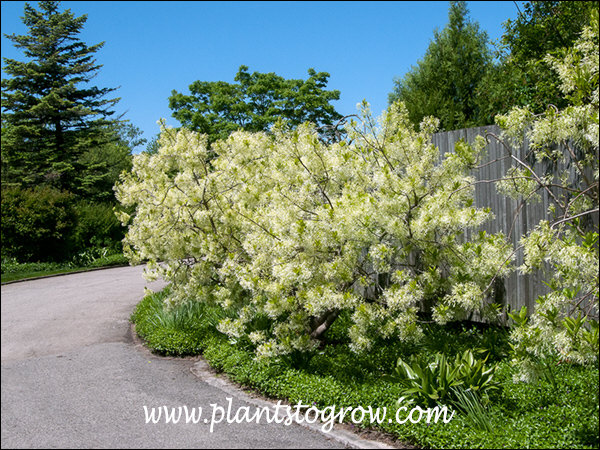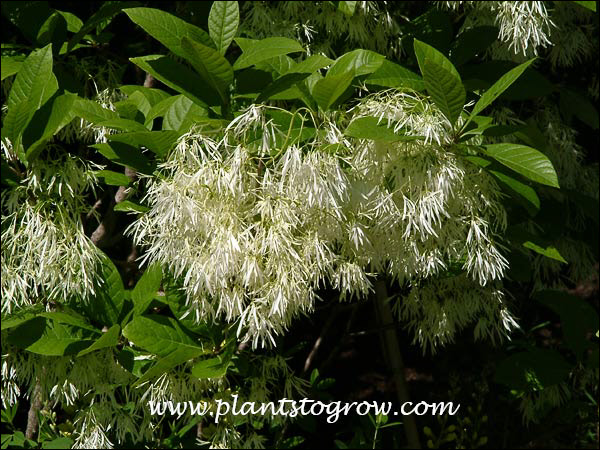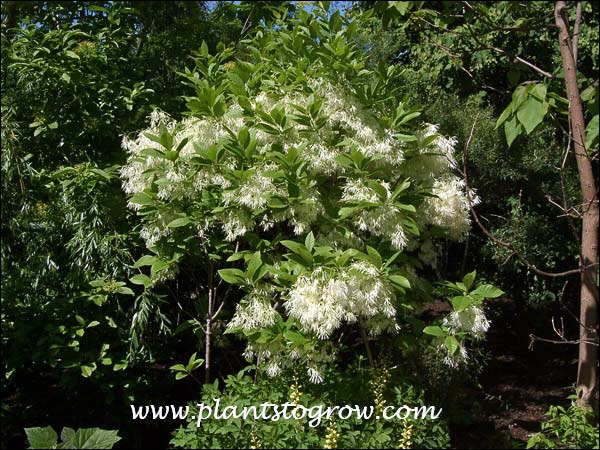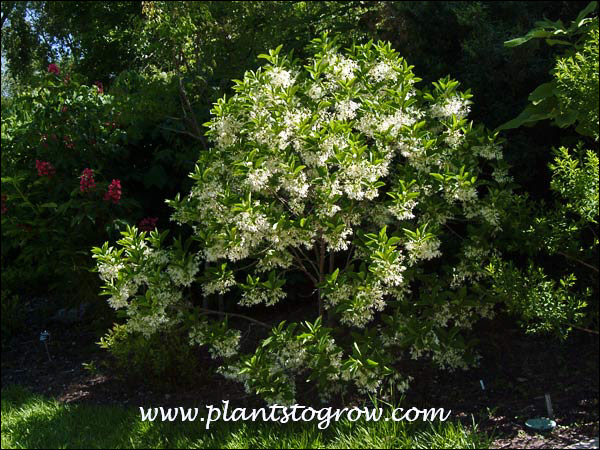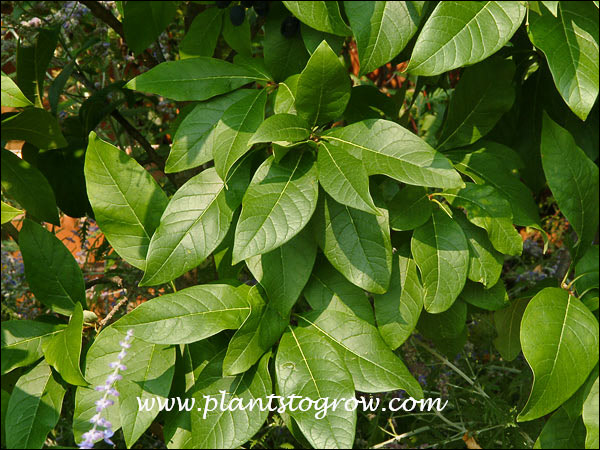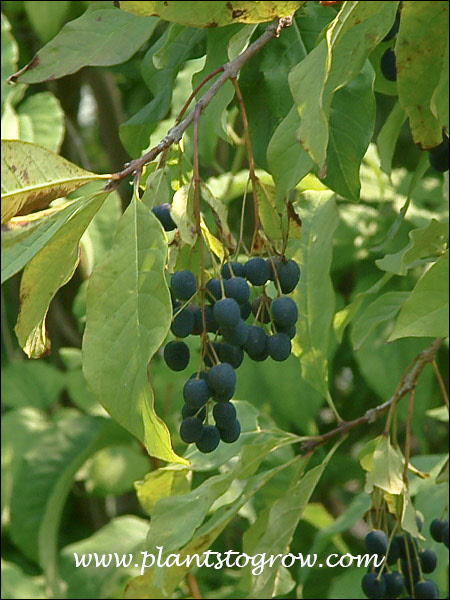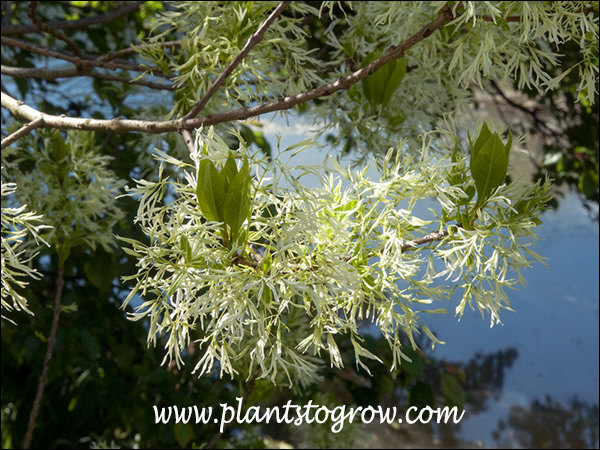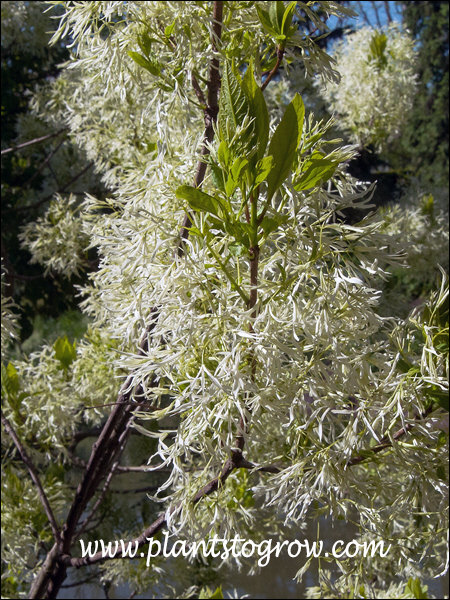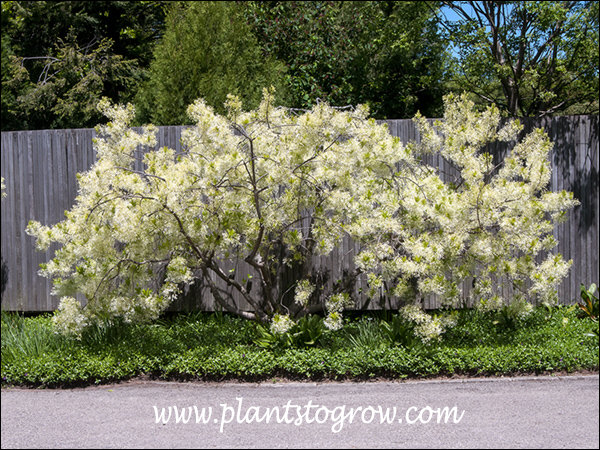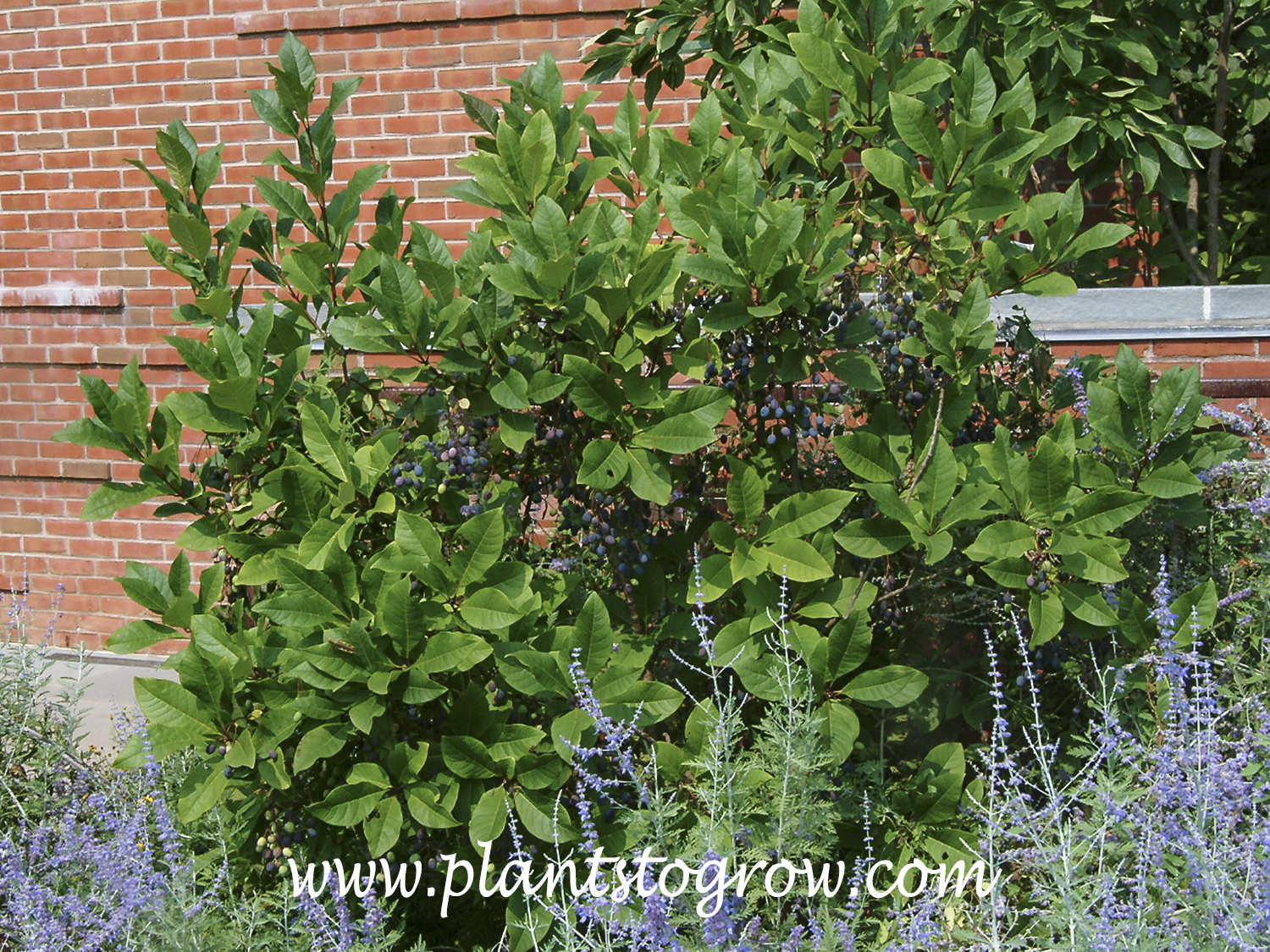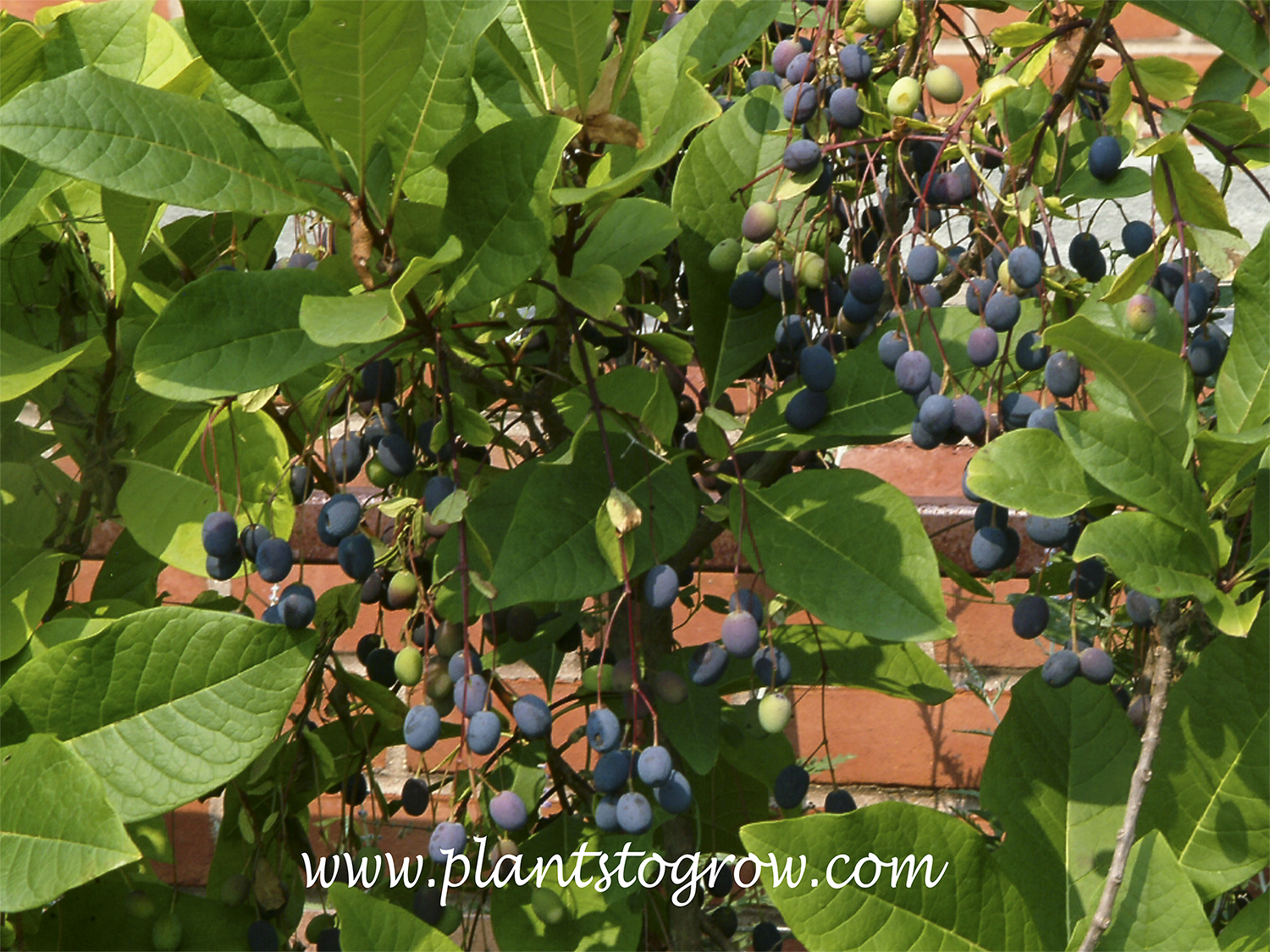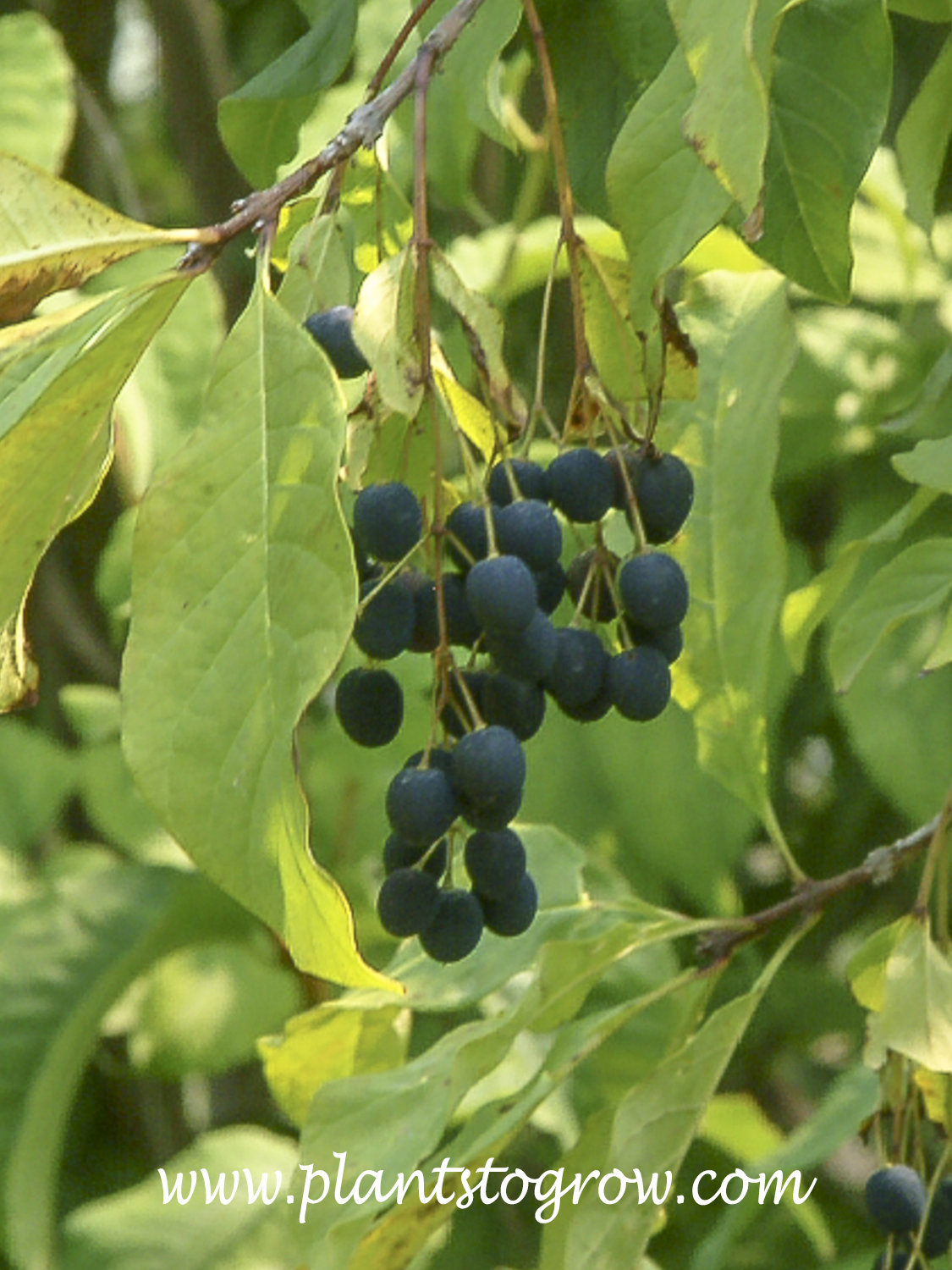| Description | White Fringe Tree (Chionanthus virginicus) is classified as a small tree or shrub and is extremely attractive when it blooms. |
|---|---|
| Pronunciation | (ki-oh-NAN-thus)(ver-JIN-i-kus) |
| Plant Type | Trees Deciduous |
| Hardiness Zone | 4(5)-9 |
| Sunlight | full to part sun |
| Moisture | preferrs moist, average |
| Soil & Site | prefers moist, average. grows along streams and swamps |
| Flowers | male and female flowers on separate trees, male more attractive because of longer petals, dropping white fragrant panicles, each with three blooms |
| Fruit | fruit on female plants, blue to almost black, egg shaped drupe |
| Leaves | simple, opposite, green, entire margin, fall color usually not significant but can be a yellow |
| Stems | scaly, brown tinged with red |
| Dimensions | can reach 25-30 feet in the wild, under landscape conditions 12-20 feet, variable in form |
| Propagation | Double-stratification: Expose seeds to a period of warm (68 degrees), moist stratification for 2-3 months, during which the radicle will emerge. Follow this treatment with cool (41 degrees), moist stratification for another 2-3 months. (Lady Bird Johnson Wildflower data base) |
| Native Site | Native to the savannas and lowlands of the southeastern United States, from New Jersey south to Florida and west to Oklahoma and Texas. |
| Misc Facts | The genus name Chionanthus, meaning snow and flower, describes the blossoms. Found growing along streams and swamps. AKA: Fringe Tree, White Fringe Tree, Grayce Gray Beard, Old Man's Beard, Chionanthus virginicus, Virginia Snow Flower |
| Notes & Reference | #1-Manual of Woody Landscape Plants (Michael Dirr), #39-The Natural History of Trees (Donald Cultrose Pattie), #93-North American Landscape Trees (Arthur Lee Jacobson) |

Cart
